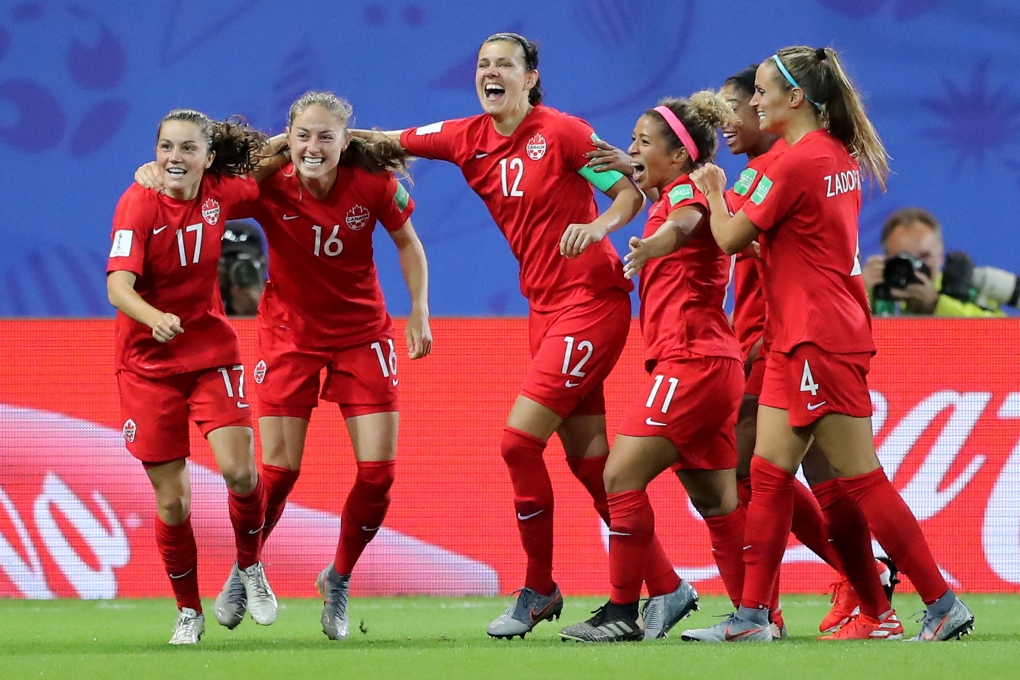Manitoba’s Soccer Establishment must take Notice
Women’s soccer, more specifically, elite women’s soccer in Manitoba, is broken. The year 2017 saw, for the first time in memory, Manitoba failing to send a team to the senior women’s club nationals. There was no team that wanted to go. Sadly, from all the teams in the women’s league, only three entered the 2017 MSA Cup competition. One of the three teams initially dropped out. To make matters worse, before a women’s MSA Cup game was even played, it was determined there would only be one game to decide the winner going to nationals. Ultimately, the remaining two teams declined the opportunity to represent Manitoba.
The CSA’s Role
Before we examine the Manitoba issues regarding what is wrong with elite women’s soccer in this province the Canadian Soccer Association (CSA) must decide if the club nationals are relevant. If the CSA decides the club nationals are indeed relevant they must take an active role in promoting the tournament. How can the CSA promote the club nationals?
Promoting the club national tournament could be simple as stating that national team coaches will attend the tournament and use the tournament as a recruiting tool. CSA could also encourage women’s professional team coaches, from around the world, to attend the tournament. In short advertise this event as a valuable talent pool for all involved in women’s elite soccer. Further, increasing funding for the provincial club teams that attend, as a reward for winning their provincial titles, would also be a positive step towards making the club national tournament desirable to attend. These are just two things that could done.
Now we consider the provincial perspective on this issue. The question is, “Why is there not one women’s team willing to represent Manitoba at the club nationals?” There are a number of factors at play, however there are two major reasons for the lack of interest.
First Major Issue
The first reason for the lack of interest is the cost of participate in the club national tournament. Teams and their players who win the MSA Cup are responsible for paying their own way to represent their province. The players must fundraise and reach into their own pockets to fund the travel to the national tournament. Further, most of the players are working full-time as no female soccer player is making their living at playing soccer. Each player on the MSA Cup winning team will lose a week’s wages for the right to represent their province at the club nationals. This double hit on the player’s financial well-being is a major reason for not wanting to participate in the national tournament.
And as we saw with the 2017 situation – the teams that initially entered the Cup but ultimately withdrew had to pay-not-to-play! The system is broken. Paying thousands of dollars not to go to a national tournament is simply wrong. Fees paid to the Canadian Soccer Association and the Manitoba Soccer Association through player registration fees should be more than enough to fund the national club tournaments. Specifically, the MSA must take note of the declining interest in the MSA Cup and CSA nationals, and come up with funds to ensure players can afford to compete at this level. Fining teams for not wanting to go to a national tournament makes no sense on so many levels. And it will certainly not encourage participation in the future.
Second Major Issue
The second major issue plaguing Manitoba women’s soccer is a shortage of quality players available for teams aspiring to go to nationals.
The poor performance by Manitoban women’s teams at club nationals must change.To be specific, the MSA Cup takes place in the summer and the national tournament takes place in early October. There is a shortage of elite level female players available to Manitoba club teams for a variety of reasons. But the main reason is the increasing number of players involved in university soccer. Most of these university bound players are only available to club teams for the first half of our local soccer season. However, many club teams will add university players to flesh out their rosters during the early season. This practice is beneficial for the teams as well as the university player. However, university players return to their university teams in August after the MSA Cup is completed. A MSA Cup winning team is then short of players for the national tournament. It is truly tragic that the good-news story of increasing university opportunities for Manitobans also tells the disastrous story of our current club system.
While it is unlikely that players attending United States universities could reconnect with their Winnipeg club team for the Canadian nationals – we know that the local universities could allow this to happen. We have seen in past years that the western Canadian university schedules can pause for the October club nationals. However, university soccer coaches are reluctant to release any of their players to the club teams participating in the club national tournament. In Manitoba, as many as fifty players are “locked-up” by the University of Winnipeg and the University of Manitoba. MSA Cup winning teams often cannot find enough quality players, and injuries compound this shortage, to take to the club nationals. Cup winning teams are then forced to add less qualified players or go to nationals with a depleted roster. Both situations result in a poor showing at the national tournament. Perhaps the MSA can convince the local universities to release players to their club for the Nationals week. As the local universities use MSA sanctioned game officials, the future use of these officials could be conditional on co-operation with our local club programs. Manitoban women’s teams consistently show poorly at the national level, often not winning any games.
So, as noted above – being financially too costly for players and their teams as well as the prospect of a depleted roster and poor results at the national level the two major reasons for the lack of interest in going to the club national tournament by Manitoban women’s soccer teams.
Other Areas of Concern
The local club team landscape could be adjusted somewhat to support the teams interested in fostering elite club soccer. The Winnipeg Women’s Soccer League (WWSL) seems totally uninterested in enhancing elite soccer participation. The WWSL furnishes divisional leagues that quite appropriately offer recreational soccer. It also purports to furnish an elite division – the premier division. The premier division has had too many teams competing for the fewer number of elite payers available which weakens team’s rosters. As well, guest/replacement players that the ultimate cup winning team inevitably looks for, to bolster their team’s national roster.
Some Suggestions for Change
Premier club soccer has to be made more attractive to potential players. The Winnipeg Women’s Soccer League (WWSL) should consider subsidizing the teams who enter the premier division. The funds for this subsidy would come from members in all WWSL divisions – with the logic that all female Manitoba players are supporting the elite level of local female soccer. Essentially elite soccer teams that win the MSA Cup will be representing all Manitoba female soccer players when they compete in the club national tournament.
Subsidies could include lower premier team registration fees and league games only at the premium fields, for example the Ralph Cantafio Soccer Complex on Waverley Street. The recent removal of assistant referees from Premier games is a clear indication that our “premier” division is not considered an elite division but rather a something less than elite. It is no wonder that when our university players finish their university eligibility, and return to the WWSL, are more likely to play co-ed soccer. Elite female soccer players, in their prime playing years, are giving up playing elite soccer. The premier division in Manitoban women’s soccer is not a viable options for them – which is a very sad situation.Many female elite soccer players leave the game of soccer entirely simply because they consider that their “soccer playing days” are over. Despite the efforts, ambitions and coaching expertise present in a few local club teams, it is increasingly difficult to sell the Winnipeg Women’s Soccer League (WWSL), premier soccer, to our elite players.
These issues, and others not mentioned, must be addressed or the future of elite women’s soccer in Manitoba is bleak. Manitoba’s soccer establishment must take a leadership role and change the status quo. There was a time, not that long ago, when premier women’s soccer was healthy. Winning an MSA Cup Championship was an extremely valued prize. Now it a seems a proposition plagued with so many problems that it is best avoided at all costs.
Elite women’s soccer can be fixed, but the will to do so must come from the highest levels of the Canadian an Manitoba soccer leadership. It is of paramount importance for Manitoba soccer that leadership act in a positive and innovative way to correct the problems that plague elite women’s soccer in this province.
A Minimum Solution
A new Rule with more flexibility should be introduced by the CSA and MSA: “Whatever the numbers of players a team loses due to universities should be allowed to replace them with ANY female players from the MMSL league or other leagues”
Much has been made of soccer as the great global equalizer, “a common language, a shared culture … an affirmation of identity,” but we need to give the Manitoba women a chance to compete and CSA,MSA and WWSL can help. “Soccer has an almost myth-making ability to transcend identity and unite the world and in this case the soccer in Manitoba and Canada”.



